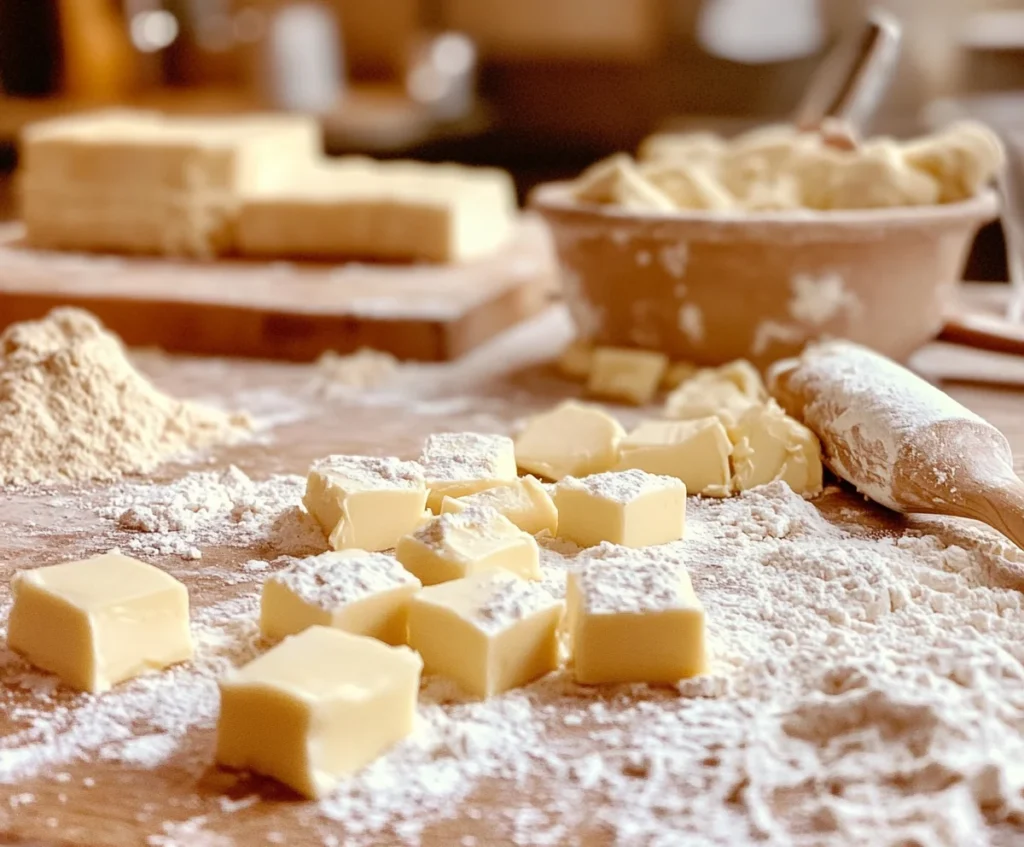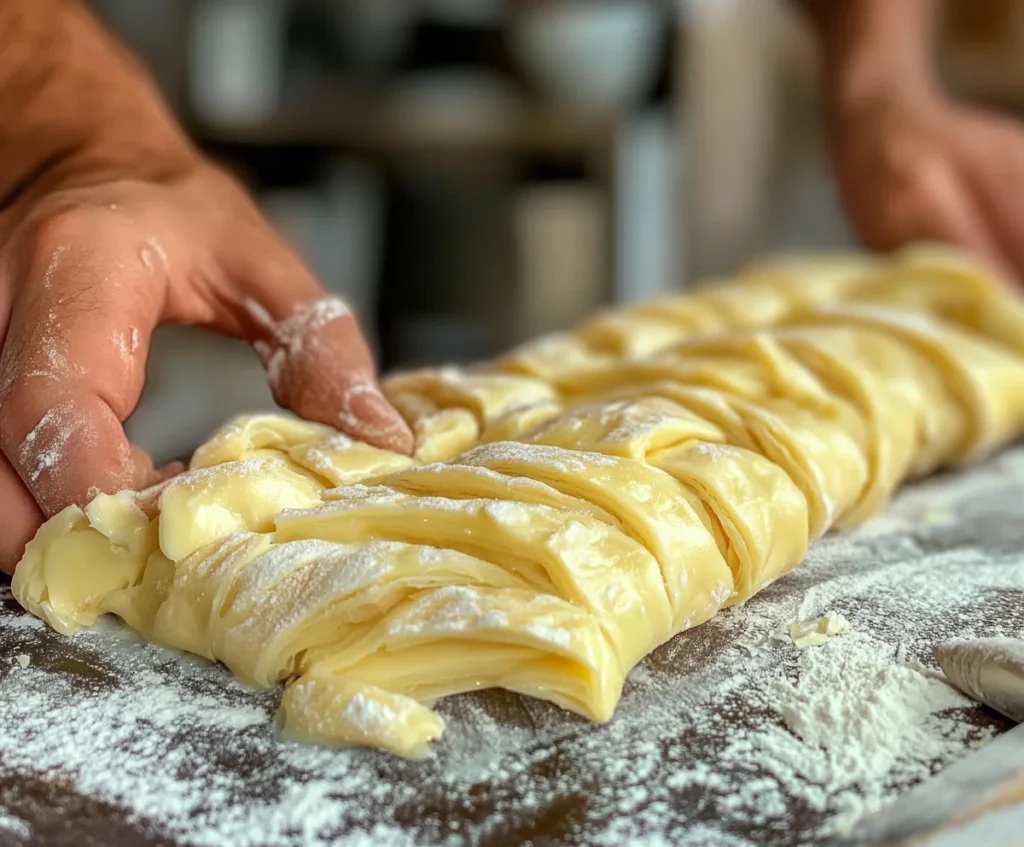Nothing captures the heart of a Swiss breakfast quite like a freshly baked Gipfeli Recipe. These buttery, crescent-shaped pastries—similar to French croissants but with a denser crumb and deeper flavor—are a national favorite. Whether enjoyed plain, with jam, or filled with sweet or savory ingredients, Gipfeli are comforting, delicious, and perfect for any time of day.
In this easy-to-follow guide, I’ll walk you through how to make Gipfeli from scratch—step by step. You’ll get tips for flaky, buttery layers, fun variations to try, and answers to common questions along the way. Let’s get baking!
What is a Gipfeli Recipe?
A Gipfeli Recipe is Switzerland’s answer to the croissant. These pastries use laminated dough (alternating layers of dough and butter) to create flaky layers, but unlike French croissants, they are slightly denser and more structured. This makes them ideal for filling with cheese, chocolate, ham, or just enjoying with butter and coffee.
Gipfeli are common in Swiss bakeries, homes, and cafés—and now, with this guide, in your own kitchen too.
Ingredients for Traditional Gipfeli Recipe

For the Dough:
- 500g all-purpose flour (4 cups)
- 10g salt (2 tsp)
- 50g sugar (1/4 cup)
- 20g fresh yeast (or 7g dry yeast)
- 300ml warm milk (1 1/4 cups)
- 50g unsalted butter, melted (1/4 cup)
For the Butter Block:
- 250g cold unsalted butter (1 cup)
For the Egg Wash:
- 1 egg yolk
- 1 tbsp milk
Tip: Use high-fat European-style butter (82% fat) for best flakiness.
Step-by-Step Guide to Homemade Gipfeli Recipe
Step 1: Make the Dough
- Mix the Ingredients:
Dissolve the yeast in warm milk, then combine with flour, salt, sugar, and melted butter. - Knead Until Smooth:
Knead the dough by hand for 10 minutes or use a stand mixer for 5–7 minutes until elastic. - First Rise:
Transfer the dough to a lightly greased bowl, cover it with a clean towel or plastic wrap, and let it rest in a warm spot for about 1 hour—or until it’s doubled in size and soft to the touch.
Step 2: Prepare the Butter Block
- Shape the Butter:
Place sliced cold butter between parchment, then roll into a uniform 20×20 cm square. - Chill:
Chill the butter in the fridge until it’s firm but still bendable—this usually takes around 30 minutes.
Pro Tip: Butter should bend, not break. Too hard and it cracks, too soft and it melts into the dough.
Step 3: Laminate the Dough
- Encasing the Butter:
Roll the dough into a 40×20 cm rectangle, place butter in the center, and fold dough over like an envelope. - Rolling and Folding:
Roll out to 50×20 cm, fold into thirds like a letter. Chill for 30 minutes. - Repeat Twice:
Do two more folds and chilling sessions. That’s three turns total.

Step 4: Shape the Gipfeli
- Roll Out Dough:
Roll into a large rectangle (60×30 cm), 5mm thick. - Cut Triangles:
Cut long triangles, about 8 cm at the base and 18–20 cm long. - Roll and Shape:
Starting at the wide end, roll the dough toward the tip, then gently bend the ends to shape it into a crescent. Place seam-side down. - Add Fillings (Optional):
Place chocolate, ham, cheese, or almond paste at the base before rolling.
Step 5: Proof and Bake
- Final Proofing:
Let Gipfeli rise at room temperature for 30–45 minutes until puffy but not doubled. - Brush with Egg Wash:
Mix 1 egg yolk and 1 tbsp milk, brush gently over Gipfeli. - Bake:
Bake at 200°C (390°F) for 15–18 minutes until golden brown. Cool on a wire rack.
Serving Suggestions for Gipfeli Recipe
Classic Options:
- With Butter & Jam: Apricot or raspberry jam complements the buttery layers.
- With Cheese & Ham: Ideal for savory breakfasts or brunch.
Sweet Variations:
- Filled with chocolate, Nutella, almond paste, or marzipan.
- Dusted with cinnamon sugar or glazed with icing for a bakery-style finish.
Beverage Pairings:
- Coffee: Espresso or latte are perfect matches.
- Tea: Earl Grey or chamomile balance the richness.
- Hot Chocolate: Especially delightful with sweet-filled Gipfeli.
Troubleshooting Common Gipfeli Issues
Tough Dough?
- Likely over-kneaded or under-proofed. Allow enough rising time and knead gently.
Butter Leaking?
- Chill the dough well between folds. Ensure no butter is exposed during shaping.
Not Flaky Enough?
- Make all three folds and chill in between. Use cold, high-fat butter for best results.
Popular Variations of Gipfeli Recipe
1. Whole Wheat Gipfeli
- For a heartier twist with a hint of nuttiness, try replacing half of the flour with whole wheat—it adds great flavor and texture.
2. Chocolate-Filled Gipfeli
- Before you start rolling, place a small strip of chocolate at the wide end of each triangle—it’ll melt into a rich surprise inside every bite.
3. Cheese & Ham Gipfeli
- Lay a slice of ham and some cheese at the wide end of the triangle, then roll it up snugly for a savory twist. Great for lunch or brunch.

Storing and Reheating Gipfeli
How to Store:
- At room temperature, keep them in an airtight container—they’ll stay fresh for up to 2 days.
- Freezer: Freeze shaped but unbaked Gipfeli. Bake from frozen with 5 extra minutes.
How to Reheat:
- Oven: 175°C (350°F) for 5–7 minutes restores crispness.
- Microwave: 30 seconds for a soft, quick snack (less crispy).
Frequently Asked Questions (FAQs)
What’s the difference between a croissant and a Gipfeli?
Croissants are lighter and more airy, while Gipfeli are slightly denser and more structured—perfect for both sweet and savory fillings.
Can I make Gipfeli vegan?
Yes! Use plant-based butter and almond milk in the dough. For an egg-free option, brush the tops with a mix of oat milk and a little maple syrup—it adds a nice golden color and a hint of sweetness.
Can I make mini Gipfeli?
Absolutely. Simply cut the dough into smaller triangles and shorten the baking time to about 10–12 minutes—they’ll bake up faster and still come out perfectly golden.
What is a Mandelgipfel?
A Gipfeli variation filled or topped with almond paste and sliced almonds. A popular sweet treat in Swiss bakeries.
Conclusion
A homemade Gipfeli Recipe brings the charm of a Swiss bakery to your kitchen. With a golden, flaky crust and a rich, buttery interior, these pastries are perfect for breakfast, brunch, or afternoon tea. Once you master the technique, you’ll find endless ways to adapt them—sweet, savory, classic, or creative.
So, roll up your sleeves, chill that butter, and start folding your way to the perfect Swiss croissant. Your kitchen is about to smell like a European bakery!

